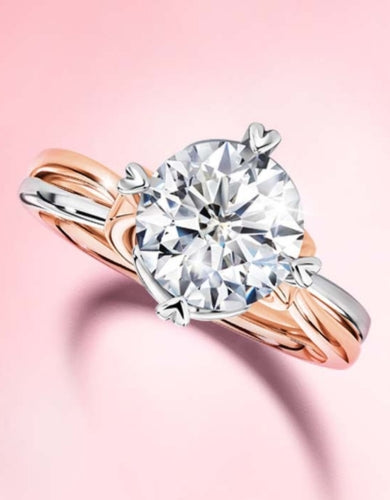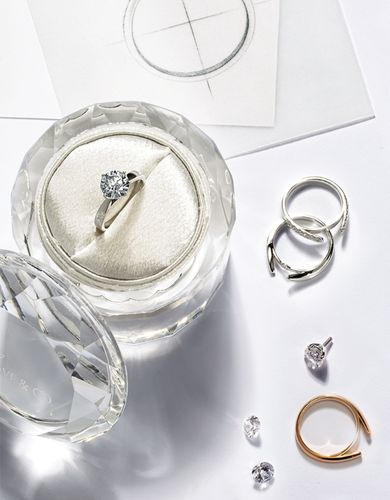Diamond Cut
The cut of a diamond refers not to its shape, but its balance of proportion, symmetry and polish that creates sparkle and brilliance. Cut refers to how the facets of a diamond interact with light, and is the most important determinant of the stone’s overall beauty.
Love & Co.’s diamonds are cut to exacting standards, bringing maximum brilliance and sparkle.
How is Diamond Cut Important?
When a diamond has been correctly cut, the diamond’s ability to reflect and refract light is greatly enhanced. By understanding the way that light moves through diamond crystals, modern diamond cutters have established a specific set of proportions and angles that are known to harness the diamond’s internal brilliance and show it in its best light.
At Love & Co., our master craftsmen dedicate themselves to crafting a diamond to exacting standards, in order to achieve excellent proportions.
Factors Surrounding the Cut of a Diamond
Cut is responsible for the quality of a diamond’s brightness and sparkle. The quality of cut is determined by three factors:
Polish: The placement of the diamond’s facets and the exterior finish of the diamond.
Symmetry: The precise intersection and alignment of the various diamond facets.
Proportions: How the size, shape, and angle of each diamond facet interacts with one another to produce the best combination for the reflection and refraction of light.
These three factors determine how light is reflected back from the diamond, which can be measured in terms of the brilliance, dispersion, and scintillation of the light reflection. The characteristics of a well cut diamond will be superior in brilliance, dispersion, and scintillation.
Evaluating a Diamond's Sparkle
The most straightforward way to evaluate a diamond’s sparkle is to observe it under different light conditions. Alternatively, specialised equipment can also be used to specifically measure how a diamond reflects light, and how much is reflected out.
Some reports, in addition to measuring a diamond’s 4Cs, specifically measure a diamond’s light performance. An example would be the Sarine Light Performance Report – which provides accurate grading on a diamond’s light performance.













